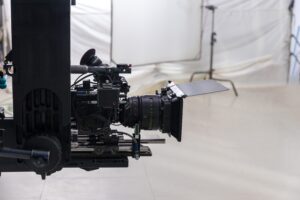Welcome to the exciting world of film production and video production planning! As a professional in this industry, you’re well aware that pre-production is a crucial step in achieving your creative vision. But to make your project successful, you need to have the right equipment. In this guide, we’ll help you select the gear that will elevate the quality of your production. We’ll walk you through the importance of pre-production and explore the factors to consider when choosing equipment. By the end, you’ll have a better understanding of how to evaluate your pre-production gear requirements and create an effective pre-production strategy. Let’s get started!
Understanding the Pre-Production Process
Before you can start selecting equipment for your pre-production phase, it’s important to have a clear understanding of the pre-production process. This is the planning phase where you’ll develop your creative vision and lay the groundwork for the rest of your film or video production. To help you with this process, we’ve put together some guidelines that will prove useful.
Pre-Production Checklist
Creating a pre-production checklist is the first step in developing your project vision. Your checklist should include a list of all the tasks you need to complete before production begins. This may include scriptwriting, location scouting, casting, storyboarding, script breakdown, budgeting, and scheduling. It’s essential to break down your checklist into actionable steps and set timelines for each task to ensure you stay on track.
Pre-Production Process
The pre-production process involves several key stages, including concept development, brainstorming, scriptwriting, location scouting, casting, storyboarding, and budgeting. Each stage is critical to the overall success of your project, and it’s essential to complete each step thoroughly and with care. This process will help you refine your project vision, identify potential issues, and ensure that your production runs smoothly.
Pre-Production Tips
Throughout the pre-production process, it’s crucial to stay organized and focused. Here are some key tips to help you achieve success:
1. Start early: Pre-production can be a time-consuming process, but starting early will provide ample time to address any issues that may arise.
2. Keep communication open: Communication is key during pre-production. Make sure to keep all involved parties informed about the project’s progress and any changes that may occur.
3. Stay flexible: Be ready to adjust your plans as needed. Pre-production is a dynamic process, and you may need to adapt to changes as you go.
By following these tips and understanding the pre-production process, you’ll be well-equipped to create a solid foundation for your film or video project.
Evaluating Pre-Production Gear Requirements
Before selecting the right equipment for your pre-production phase, it’s essential to evaluate your pre-production gear requirements. This involves identifying the specific services and activities involved in pre-production, as well as the necessary steps to bring your creative vision to life.
Pre-production services may include scriptwriting, storyboarding, location scouting, casting, and more. It’s vital to consider the specific services required for your project and ensure that your equipment choices are compatible with them.
Pre-production activities may involve creating a shooting schedule, assembling a production team, and finalizing the budget. Identifying these activities will help you understand the gear requirements for each step and choose the right equipment to meet those needs.
Pre-production steps may include conducting research, developing a concept, and planning logistics. The right gear can help streamline these steps and make your pre-production phase run smoothly.
By carefully evaluating your pre-production gear requirements, you’ll be able to choose equipment that meets the needs of your project, from start to finish.
Key Factors to Consider in Gear Selection
Choosing the right gear is crucial in realizing your pre-production strategy. To make the right selection, you need to consider several factors.
Budget
Your budget plays a vital role in gear selection. You want to ensure that you get the most bang for your buck without overspending. Research different equipment options and compare prices to determine which gear will give you the best value for your budget.
Project Requirements
Your project requirements should guide your gear selection. Consider the type of project you are working on, the location, the lighting, the sound, and other critical factors. For example, if you are shooting in low light, you’ll need a camera with a large sensor and low-light capabilities.
Creative Vision
Your creative vision should be at the forefront of gear selection. You want equipment that will help you achieve your vision and bring it to life on the screen. Consider the look and feel you want to achieve and choose gear that will help achieve your desired style.
“Your gear selection should be based on your budget, project requirements, and creative vision.”
When selecting gear, keep in mind that it should elevate the quality of your production and help you achieve your creative goals. By considering these key factors, you can make informed decisions that will benefit your project throughout the pre-production process.
Essential Gear for Pre-Production
Now that you understand the pre-production process and have evaluated your gear requirements, it’s time to equip yourself with the essential pre-production gear. Here are some equipment that you should have in your toolkit:
Camera: Your choice of camera depends on your project requirements and creative vision. For instance, a DSLR or mirrorless camera is perfect for independent filmmakers, while a high-end cinema camera is ideal for feature film production.
Lighting: Good lighting is essential for achieving the desired look and setting the mood of your production. Invest in quality lights, such as LED panels or softboxes, to achieve professional-looking results.
Sound Recording: Good audio quality is equally important as video quality. A shotgun microphone or lavaliere mic is necessary for capturing clear audio during pre-production.
Grip Equipment: Grip equipment, such as tripods, sliders, and stabilizers, help you achieve stable and creative camera movements.
Computer and Software: You’ll need a computer and editing software to handle footage and audio files during post-production. Choose a computer with sufficient processing power and RAM to handle your project’s demands.
Having the right gear for pre-production can make all the difference in achieving the desired results. Take the time to invest in quality equipment to elevate the overall quality of your project.
Conclusion
Pre-production is a crucial phase in film and video production planning. By carefully selecting the right gear, following a pre-production checklist, and keeping your creative vision and project requirements in mind, you can ensure the success of your project.
Remember to evaluate your pre-production services, activities and steps to identify the specific gear you’ll need. Take into account your budget and project requirements and consider the key factors discussed in this guide before making your gear selection.
Elevate the quality of your production by having the essential pre-production gear such as cameras, lighting, sound recording devices, and more. With this guide, you’ll be equipped with everything you need to bring your creative vision to life.
FAQ
Q: What is pre-production?
A: Pre-production refers to the planning and preparation phase of film or video production. It involves tasks such as scriptwriting, casting, location scouting, and gear selection.
Q: Why is pre-production important in film and video production planning?
A: Pre-production is essential because it sets the foundation for a successful project. It allows you to thoroughly plan and organize all aspects of the production, ensuring a smooth workflow and a high-quality end result.
Q: How do I create a pre-production checklist?
A: To create a pre-production checklist, start by identifying all the tasks that need to be completed before production begins. This can include script breakdown, budgeting, scheduling, and equipment procurement. Organize these tasks into a checklist format for easy reference and tracking.
Q: What are some important steps in the pre-production process?
A: Important steps in the pre-production process include script development, storyboarding, casting, location scouting, securing permits, and creating a production schedule. These steps help ensure that all necessary elements are in place before shooting begins.
Q: How do I evaluate my pre-production gear requirements?
A: Evaluating your pre-production gear requirements involves assessing the specific needs of your project. Consider factors such as the type of content you’re creating, the shooting environment, required technical specifications, and any specialized equipment or accessories needed.
Q: What factors should I consider in gear selection for pre-production?
A: When choosing gear for pre-production, factors to consider include your budget, project requirements, desired aesthetic or technical goals, and the availability of rental options. You should also think about long-term investment value and the compatibility of the equipment with your existing setup.
Q: What are some essential gear for pre-production?
A: Essential gear for pre-production typically includes cameras, lenses, lighting equipment, sound recording devices, tripods, and production accessories such as clamps, gels, and filters. The specific gear needed may vary depending on the nature of your project.




